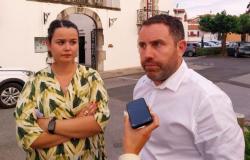There Esplanade fountain and the Mairithey will be red at night during World Hemochromatosis Week (June 1 to 7), genetic disease characterized by iron overload in the blood. A first “symbolic participation”as indicated by the municipality.
Unpublished in France
Enlightenment public or historic buildings on this occasion is a practice applied in several countries around the world on this occasion, but few, if any not in France. Doctor Camille Lapierre, president of the Hémochromatose France association (AHF, based in Nîmes), affirms that he has no never seen this initiative carried out in France. The former surgeon now aged over 90 years old states: “It is the most common genetic disease in France, but little known, including by certain doctors.”
About ten refusals
Uzes would then be only French city to put this cause under red light? Possible, because the France iron hemochromatosis association (distinct from the previous one mentioned) affirms that at least this year, no symbolic illumination takes place in its local branches: “The FFH has already tried, but it is very complicated to light up a site for less common causes.”
The level of Gardthe retired Nîmes doctor says he requested around ten municipalities of his sector for this cause, without success. He then asked the mayor of Uzès Jean-Luc Chapon, whom he knew personally. “The mayor was receptive”rejoices Michèle Tarrès-Péra, resident of Foissacactive member of the AHF.
21 patients in Uzège
The initiative of the city of Uzès is, to say the least, unpublished, if not unique in France. It aims to raise awareness among the public, some of whom will certainly be surprised by seeing infrastructure under red light: “The idea is that people ask questions and find out information,” asserts Alexandre Cordiergeneral director of municipal services.
According to its data, the AHF has 301 patients in the Gard, 21 in Uzège And 7 in Uzès. Symptoms of this disease include fatigue, atypical joint pain, skin pigmentation, diabetes. The diagnosis is made through blood tests, which can be followed by a genetic test.






